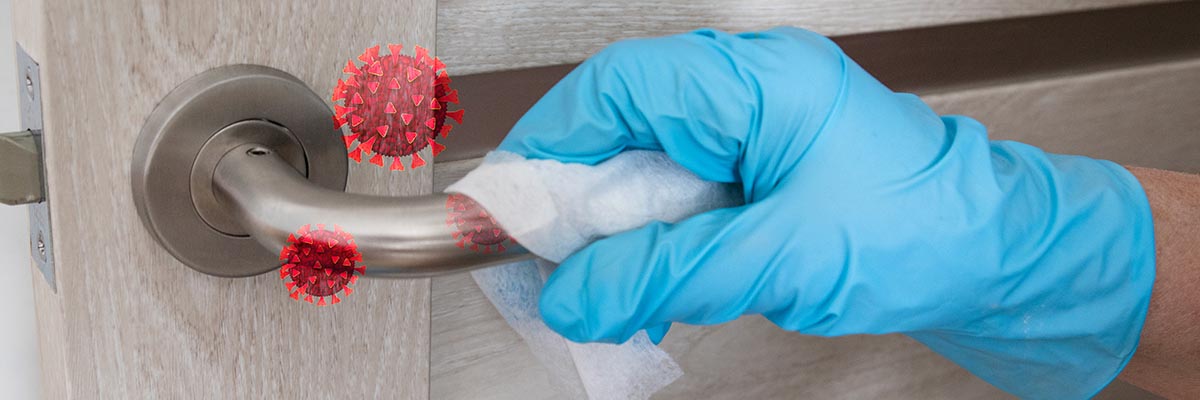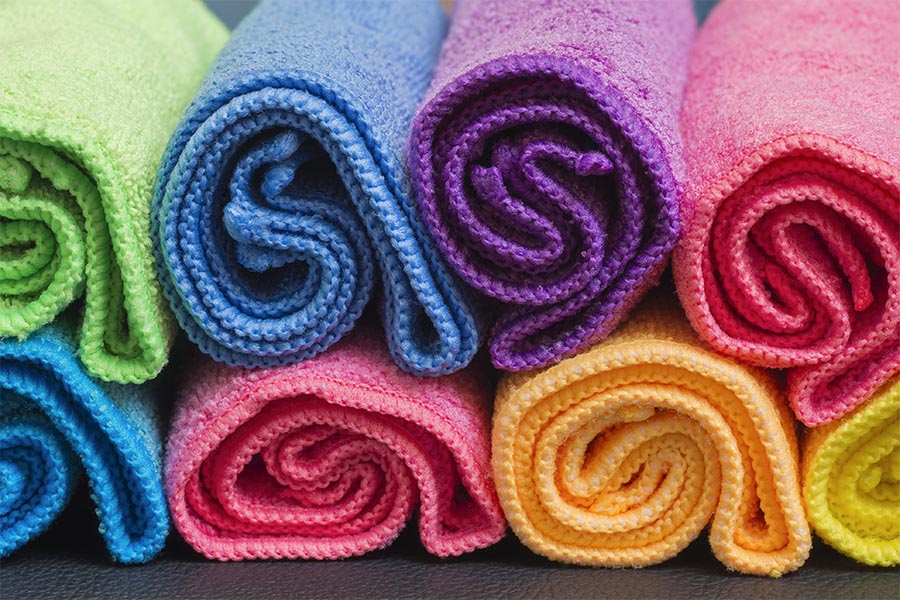Avoiding Cross-Contamination in Janitorial and Environmental Service (EVS) Processes
Cross-contamination is a critical concern in janitorial work. It occurs when harmful microorganisms or contaminants are unintentionally transferred from one surface or area to another, increasing the risk of infection and illness. Proper janitorial and EVS procedures play a vital role in maintaining hygiene and safety in commercial, healthcare, and industrial settings.

Preventing cross-contamination is essential for ensuring the health of building occupants, customers, and cleaning professionals alike. Effective strategies include following structured cleaning procedures, using the right cleaning products, implementing color-coded tools, and maintaining strict hand hygiene practices. This article will explore these key methods in detail.
Tip 1: Using the Right Procedures to Reduce Cross-Contamination
Cleaning from top to bottom is a fundamental principle in reducing cross-contamination. This method ensures that dirt, dust, or pathogens dislodged during cleaning do not recontaminate lower surfaces.
Beyond working from top to bottom, it’s also important to recognize that rooms often have cleaner and dirtier sections. In a restroom, for instance, the sink is generally cleaner than the toilet. Begin with the cleaner sections and gradually move toward the dirtier ones to prevent transferring contaminants. After addressing the dirtier sections, replace or discard cleaning tools before moving to a new location.
By following these steps, janitorial and EVS staff can greatly minimize the spread of contaminants from one surface to another.
Tip 2: Using the Right Cleaning Products and Disinfectants
Understanding the Difference Between Cleaning, Sanitizing, and Disinfecting
Cleaning removes dirt and debris, sanitizing reduces bacteria to safe levels, and disinfecting kills most harmful microorganisms. Using the right method for each situation is essential. For more details, refer to the article Understanding the Differences Between Disinfecting, Sanitizing, and Cleaning.
Selecting EPA-Registered Disinfectants
Choosing the proper disinfectant is a critical decision that impacts both effectiveness and cost efficiency. With numerous options, selecting the best product for your needs can be complex. Your Hillyard representative can help you determine the most effective disinfectant for your environment while ensuring the lowest total cost to clean.
Proper Dilution and Application Techniques
Disinfectants must be mixed and applied according to manufacturer guidelines. Over-dilution can make them ineffective, while under-dilution can leave residues that pose health risks. Be sure your training program emphasizes the correct dwell time (contact time) to ensure maximum effectiveness before wiping the surface.
Using Microfiber Products
Microfiber cloths are highly effective at capturing dirt, bacteria, and allergens, reducing the spread of contaminants. Their dense fibers allow for superior absorption, requiring less water and chemical use than traditional materials. Additionally, microfiber cloths are durable and can withstand multiple washes, making them a cost-effective choice for janitorial work. By using microfiber, cleaning professionals can achieve a higher standard of cleanliness with less effort. Learn more in the article Upgrade Your Cleaning with Microfiber Cloths.

Tip 3: Establishing a Color-Coded Cleaning System
Using color-coded microfiber cloths ensures that each cloth is only used for its designated purpose, reducing the risk of spreading bacteria or dirt from one area to another. This is particularly important in hospitals, kitchens, or commercial facilities where cleanliness is crucial.
Recommended Color Codes:
- Red – High Risk / Critical: Patient contact surfaces, operating rooms, toilets, urinals, and restroom floors
- Blue – General Cleaning: Furniture, floors, glass, and mirrors
- Yellow – Lower Risk / Critical: High touch points, wash basins, sinks, fixtures
- Green – Food Service: Food preparation, kitchen, cafeteria
By maintaining a standardized system, janitorial and EVS teams can minimize the accidental spread of bacteria between zones.
Tip 4: Follow Best Practices for Hand Hygiene and Personal Protective Equipment (PPE)
Encouraging Frequent Handwashing
Handwashing should always be performed after cleaning tasks, handling waste, or removing gloves. Proper handwashing involves scrubbing hands with soap and warm water for at least 20 seconds, ensuring to clean between fingers, under nails, and the backs of hands. Rinse thoroughly and dry with a clean towel to prevent the spread of bacteria and viruses.
Using alcohol-based hand sanitizers can supplement handwashing when soap and water are unavailable.
Proper Use and Disposal of PPE
- Change gloves between different cleaning areas.
- Dispose of masks after single use or wash reusable ones regularly.
- Wear aprons or uniforms that are disposable or can be laundered daily to avoid bringing contaminants home.
Preventing Cross-Contamination Through Clothing Policies
Janitorial and EVS staff should avoid wearing contaminated uniforms outside of the workplace. Establishing a uniform laundering program can further reduce the spread of pathogens.
Conclusion
Preventing cross-contamination in janitorial processes is crucial for maintaining a safe and hygienic environment. Key takeaways include:
- Following structured cleaning procedures.
- Using the correct disinfectants and cleaning products properly.
- Implementing a color-coded system to prevent cross-use of equipment.
- Practicing strict hand hygiene and using PPE effectively.
Consistency and attention to detail are vital in janitorial work. By implementing these strategies, cleaning professionals can uphold the highest hygiene standards. If you need expert guidance in developing effective janitorial processes, Hillyard has knowledgeable representatives across the United States who can assist you in avoiding cross-contamination and improving your cleaning procedures. Use the “I’m Interested” form below, and one of our representatives will contact you.